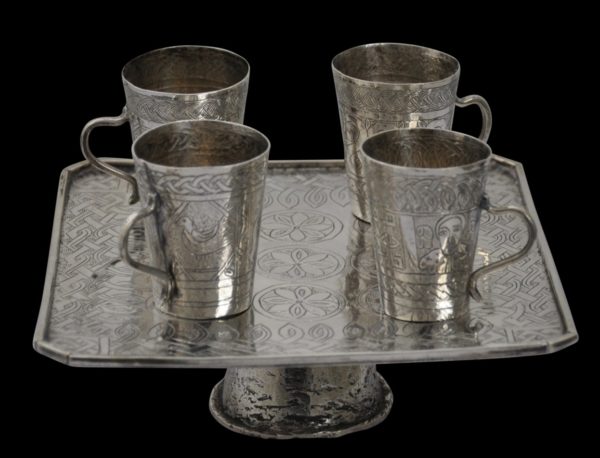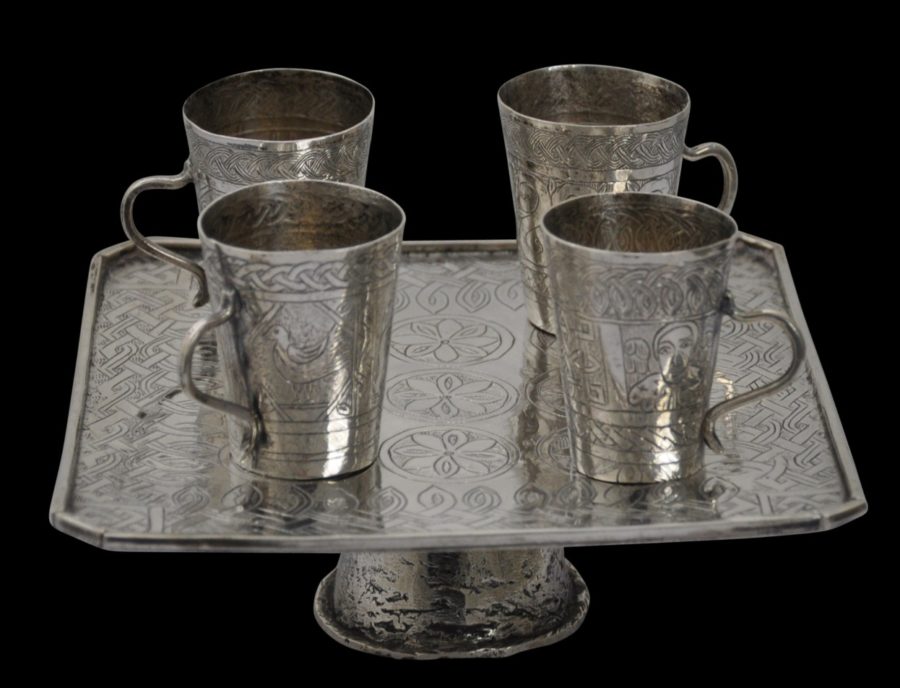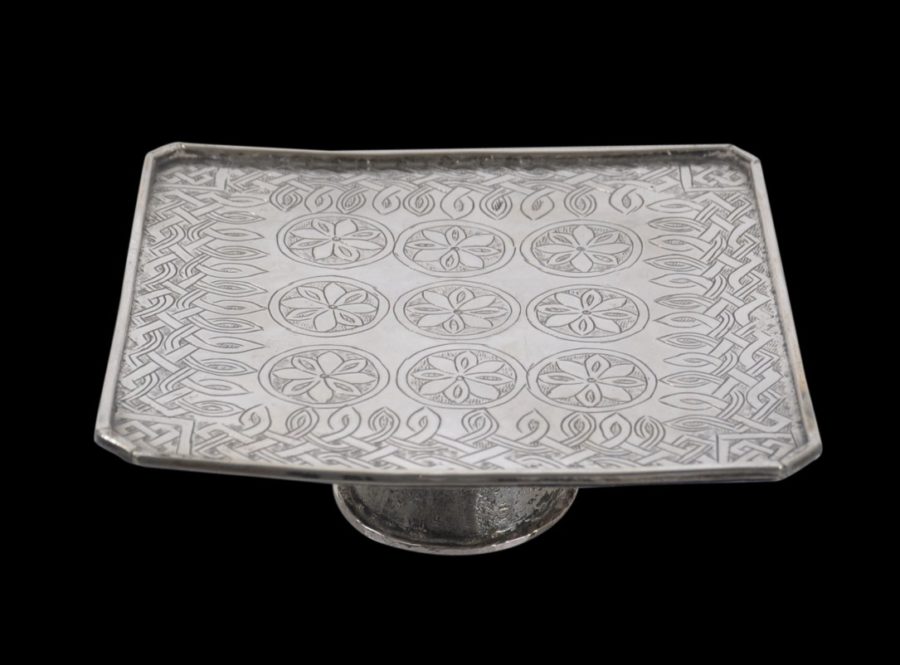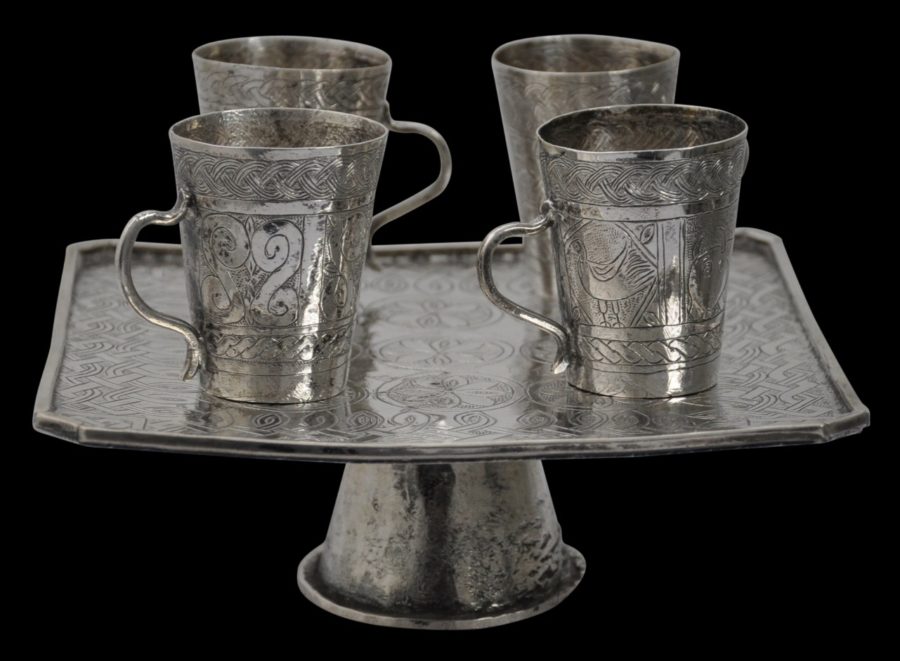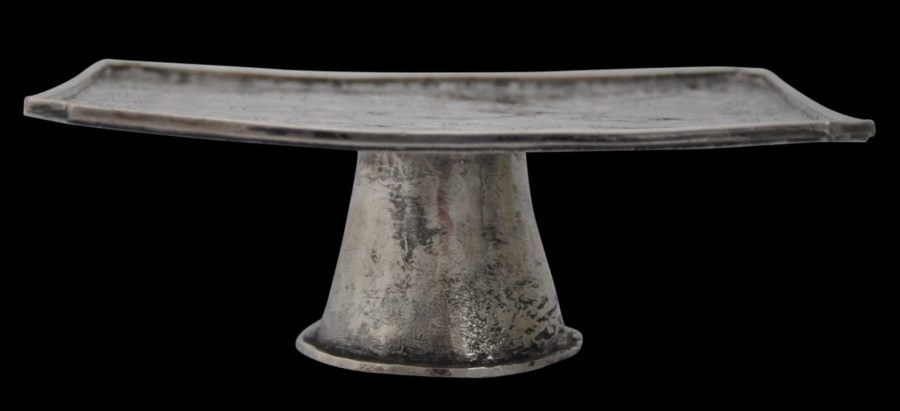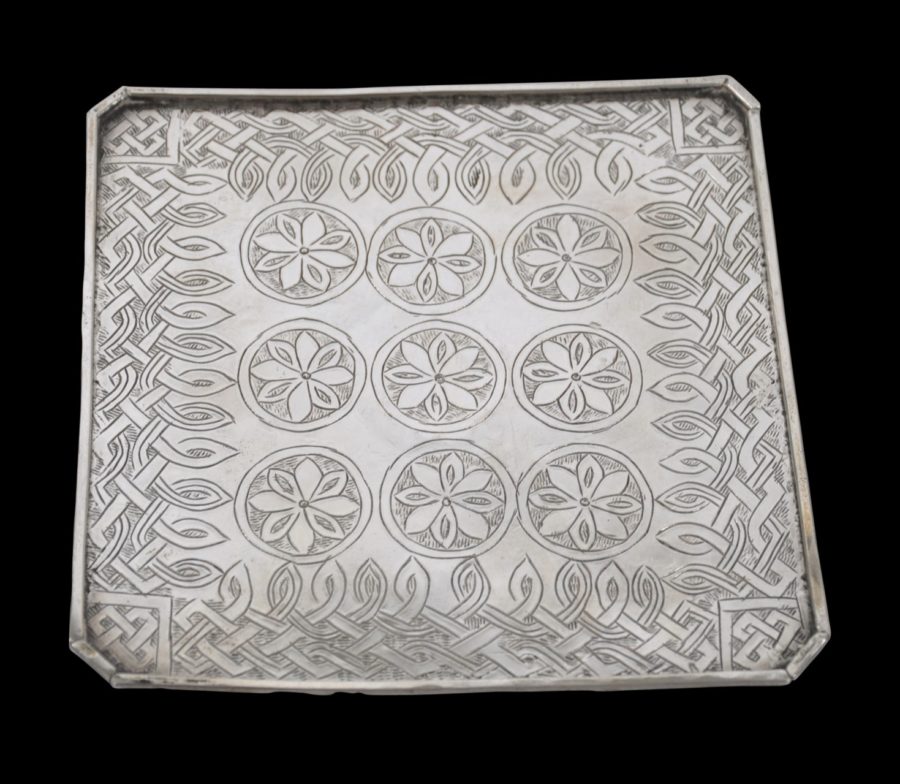This platform-table and four small cups with handles is of particularly high-grade silver which has been hand beaten and engraved. The whole set has a sculptural quality and a naive charm.
The platform is heavy for its size – the silver was not economised on in its construction. It has a conical, flared foot rising to a square top around the edge of which runs a ridge. The top is engraved with interlacing borders and nine roundels infilled with flower motifs. The form of the platform-table appears based on a type of traditional full-sized table made of woven split bamboo of similar form and known as a sadaqa (see Biasio, 2004, p. 181.)
The four cups also have a tapering form. They are engraved with interlacing borders and various with human figures, cows and significantly, the Lion of Judah, which is portrayed in conventional form with its body side on but the face turned so it faces the viewer.
The Lion of Judah traditionally is regarded as the symbol of the Israelite tribe of Judah from which the emperors of Ethiopia claimed descent. Ethiopia’s emperors – the ‘kings of kings’ – adopted the symbol as their own, and so it often was depicted in Ethiopian art and items associated with the royal family.
It is likely that the set was designed to serve a spirit or perhaps had a liturgical purpose. In any event, wealthier Ethiopian households did consume alcoholic beverages from small glasses and cups. An early photograph shows the Emperor Menelik and his family seated at tables and enjoying bottled wine with their meal (see Biasio, 2004, p. 57). The set might also have been used to serve tej, a wine made from fermented honey that is popular in Ethiopia.
The set is in excellent condition.
See our blog on the looted Ethiopian treasures from Maqdala.
References
Biasio, E., Majesty and Magnificence at the Court of Menelik: Alfred Ilg’s Ethiopia around 1900, Verlag Nueue Zurcher Zeitung, 2004.
Perczel, C.F., Ethiopia: Folk Art of a Hidden Empire, Mingei International, 1983.


